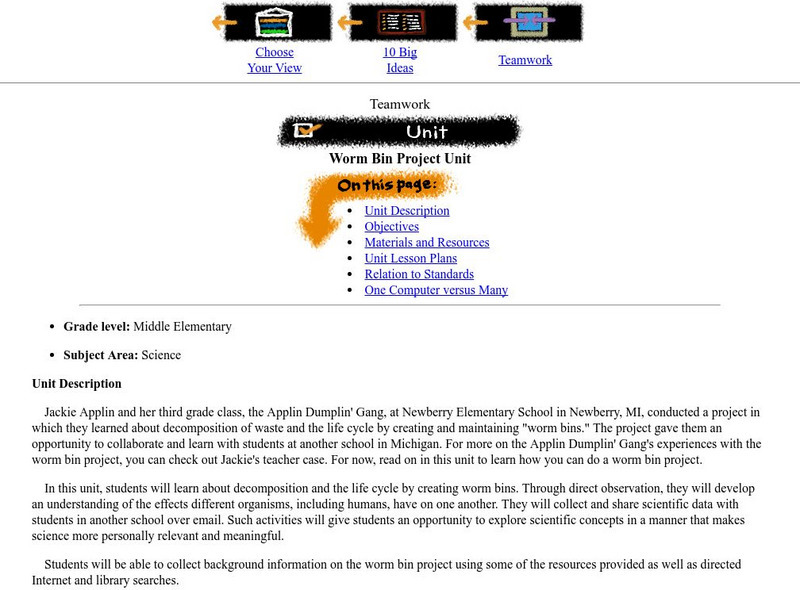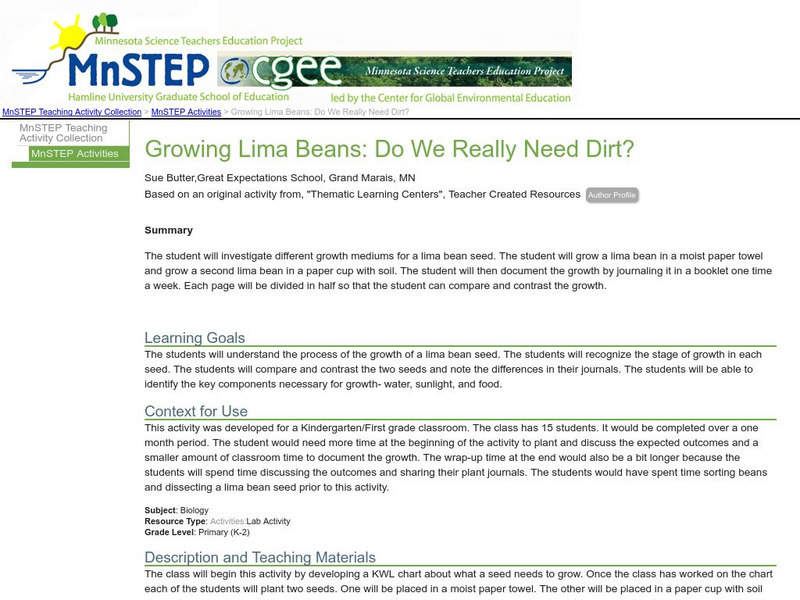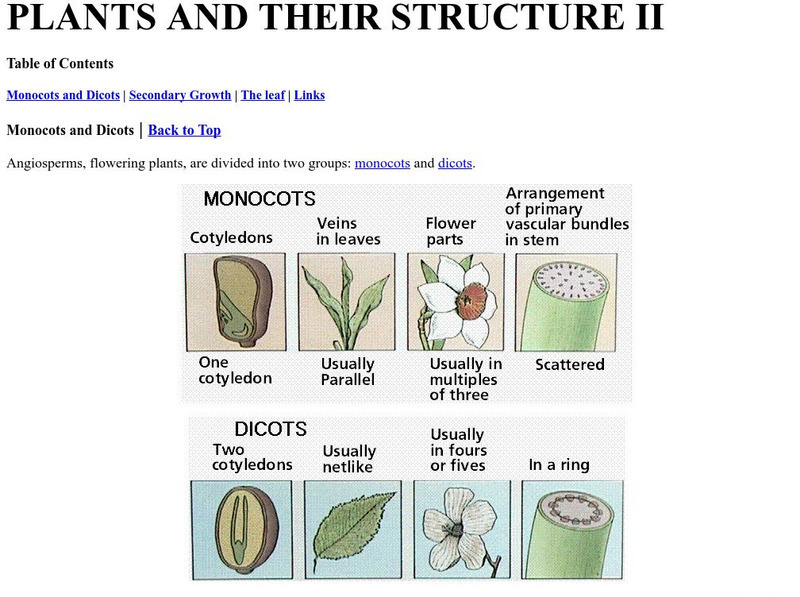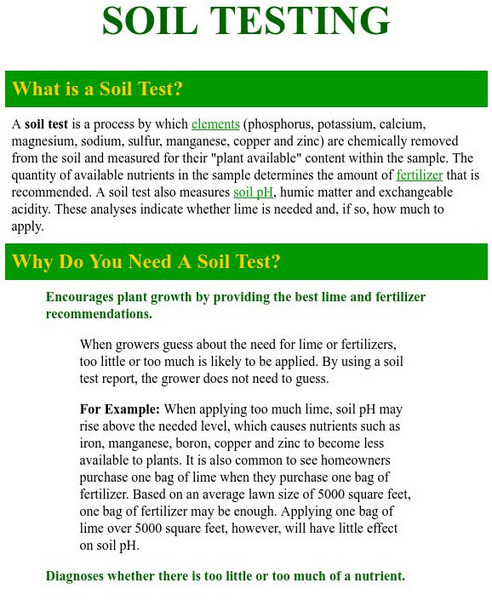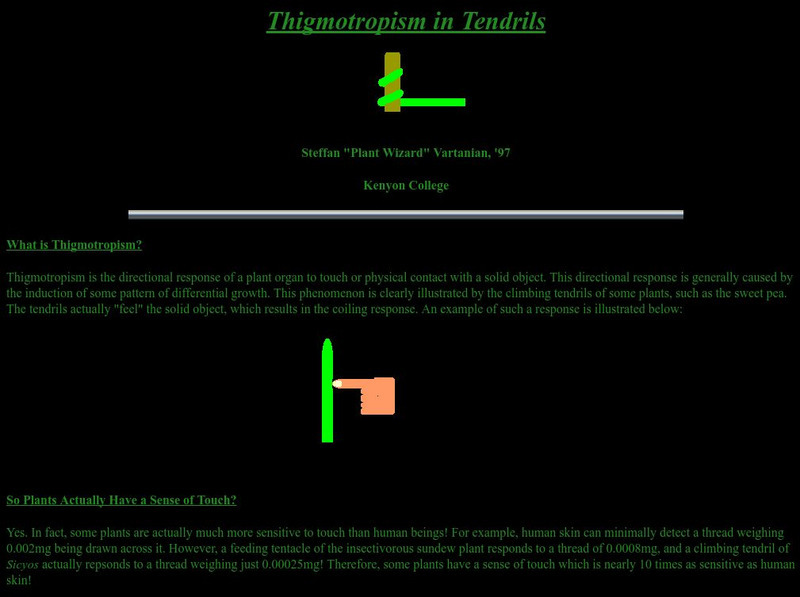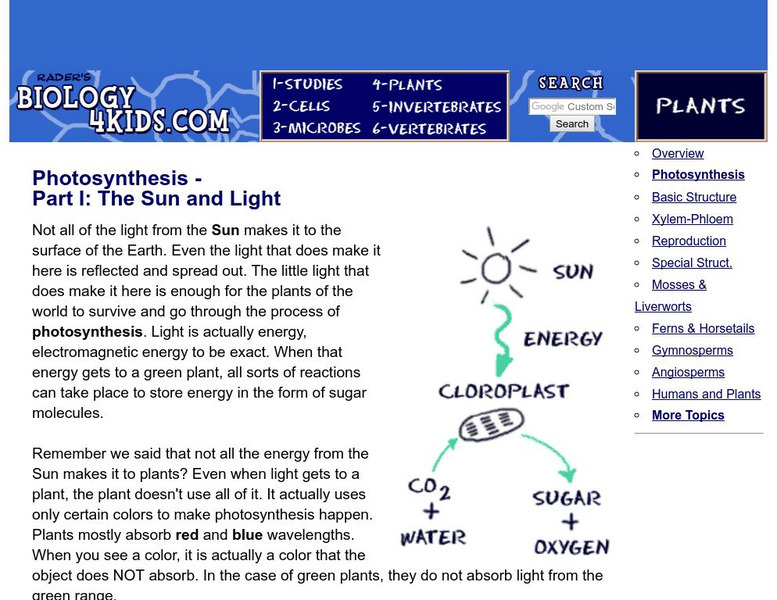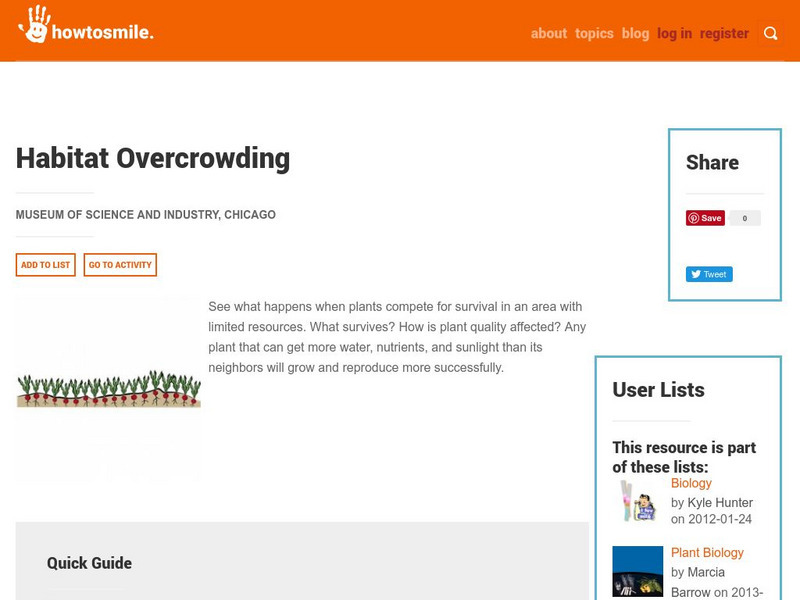Hi, what do you want to do?
Children's Museum
The Children's Museum of Indianapolis: Growing a Grass Head
Students learn about germination, or the process by which an organism grows from a seed and witness how seeds use sun, water, and soil to turn into a fascinating head of grass.
Children's Museum
The Children's Museum of Indianapolis: Plants Alive: Garden in a Glove Journal
Students will observe the germination and growth of plants from seeds over the course of several days, and record their observations in a journal.
McGraw Hill
Mhhe: Plant Growth and Growth Regulators
A very good overview of the hormonal control of plant responses to different environmental cues. Good place to start research.
McGraw Hill
Mc Graw Hill Higher Education: Johnson Explorations: Photosynthesis
Photosynthesis is illustrated in this interactive. Begin by looking at a chloroplast and follow the path of electrons throughout. Discover what can affect the rate of photosynthesis by adjusting the light intensity and light wavelength.
Michigan State University
Michigan State University: Lets Net: Growing Plants Unit
In this unit, students can learn about the affects of water, soil, and sunlight on plant's growth while learning about the scientific process. Unit allows students to create a controlled experiment while studying plants.
Michigan State University
Michigan State University: Lets Net: Worm Bin Project Unit
Students learn about the worm life cycle and decomposition of life by creating small-scale worm ecosystems. Research groups share scientific data with groups at other schools using web-based communication tools.
Science Buddies
Science Buddies: Growing, Growing, Gone! An Experiment on Nitrogen Fertilizers
Plants need nitrogen to build proteins and nucleic acids to grow healthy stems and leaves. Though the Earth's atmosphere is made up of 79% nitrogen, the form of nitrogen found in the atmosphere cannot be used by plants. In this...
Science Education Resource Center at Carleton College
Serc: Habitat Part 2
This activity is designed for students to examine soil and determine which soil will be the best for plant growth. The students will also investigate the effect of sunlight on plants and the importance of sunlight in producing chlorophyll.
Science Education Resource Center at Carleton College
Serc: Investigating an Inquiry Approach to Germination Growth in Plants
In this lab, middle schoolers investigate the effects of a variable on the germination of a small plant. They will compare the growth of their variable to a control then write a lab report to report their findings.
Science Education Resource Center at Carleton College
Serc: Effects of Air Temperature on Seed Germination
Students investigate the effects of air temperature on seed germination by preparing seeds for germination and placing them in locations of varying temperatures. Students will monitor and record data concerning the temperatures and...
Science Education Resource Center at Carleton College
Serc: Growing Lima Beans: Do We Really Need Dirt?
Students investigate different growth mediums for a lima bean seed: a wet paper towel and a paper cup with soil.
Science Education Resource Center at Carleton College
Serc: Investigating Soil Which Soil Help Plants Grow?
In this guided inquiry lab, students will investigate what type of soil let plants/grasses grow the best. Students will answer the question by conducting an experiment using five different soils found in our area, school soil, potting...
Science Buddies
Science Buddies: Humic Acid and the Optimum Soil for Plants
Humic acid is touted as an organic soil additive to improve plant growth by multiple means. Does it really work? Here's how you can find out.
Huntington Library
Huntington Library: Making Community Measurements: Abiotic Factors [Pdf]
A lesson plan in which students explore plant communities and observe different types of soil and weather conditions in an attempt to determine cause and effect relationships. Includes discussion questions, extension activities and web...
Wikimedia
Wikipedia: Gravitropism (Geotropism)
Gravitropism (or geotropism) is how a plant responds to gravity. Roots have a positive reaction to gravity and they grow toward it. Stems have a negative reaction and grow away from gravity. Learn more about what happens inside a plant...
Estrella Mountain Community College
Online Biology Book: Plants and Their Structure Ii
Find out about the major differences between monocot and dicot plants. Learn about the many plant tissues which contribute to its growth.
Estrella Mountain Community College
Online Biology Book: Photosynthesis
An in-depth look at the process of plant photosynthesis. Author uses full-color illustrations and diagrams to help readers understand the biology of this life process.
Iowa State University
Iowa State University: How a Corn Plant Develops
The Iowa State University provides a good description of the development of an important crop plant. The overview compares favorably with the development of any plant.
Climate Literacy
Clean: Temperature and Precipitation as Limiting Factors in Ecosystems
Students correlate graphs of vegetation vigor with those of temperature and precipitation data for four diverse ecosystems, ranging from those near the equator to the poles, to determine which climatic factor is limiting growth.
Other
What Is a Soil Test?
The North Carolina Department of Agriculture explains soil testing, taking a soil sample, and analyzing the results.
Other
Kenyon College: Thigmotropism in Tendrils
What is thigmotropism? Do plants have a sense of touch? What causes plants to curve toward the stimulus? Animated illustrations help to provide these answers and more. Hint: highlighting the text makes it easier to read.
Biology 4 kids
Biology4 Kids: Photosynthesis Part I: The Sun and Light
Read about the four steps of photosynthesis in this brief, simplified tutorial.
Other
National Science Digital Library: Smile: Habitat Overcrowding
Experiment with crowd control in a garden. Students will test what happens to radish plants observing who survives, who gets the most food, water and sunlight.
CK-12 Foundation
Ck 12: Biology: Plant Growth
[Free Registration/Login may be required to access all resource tools.] Discusses meristem and its role in plant growth.









